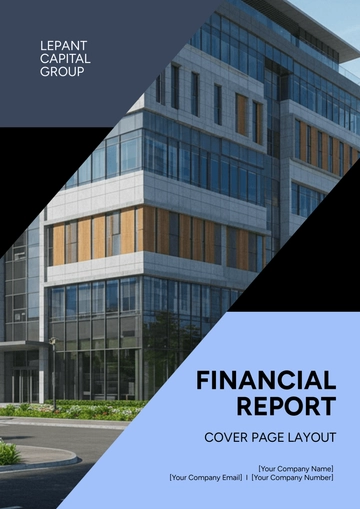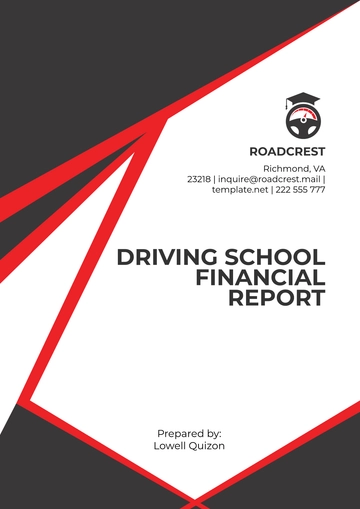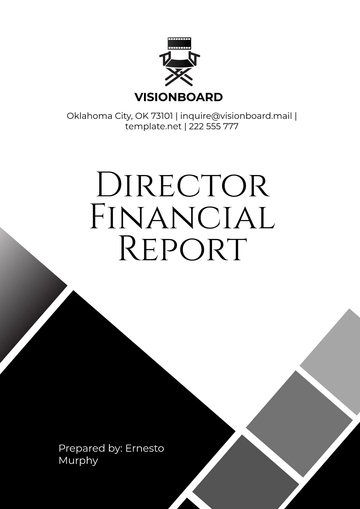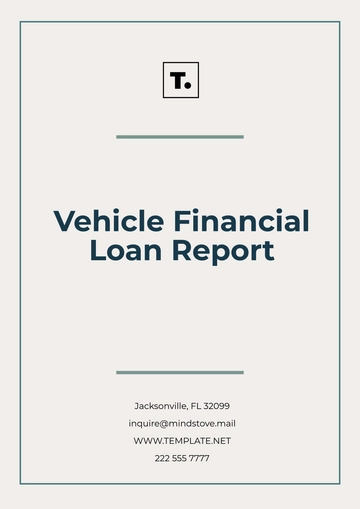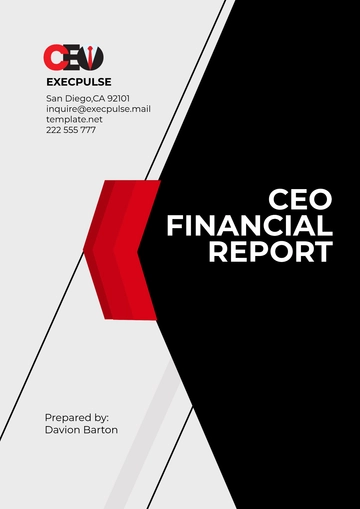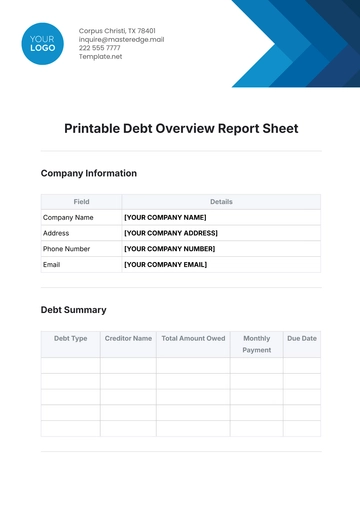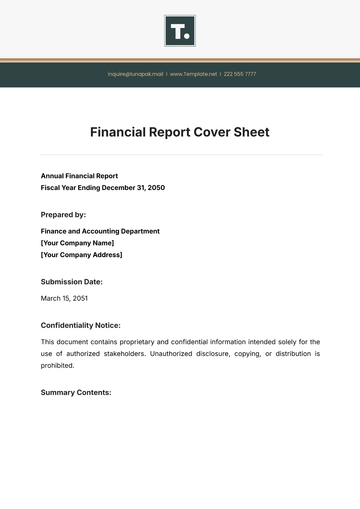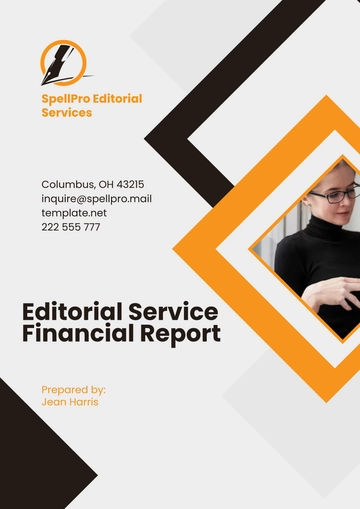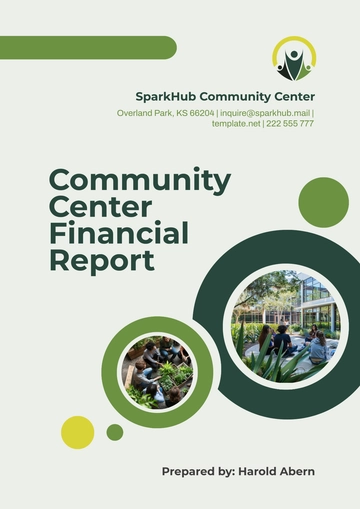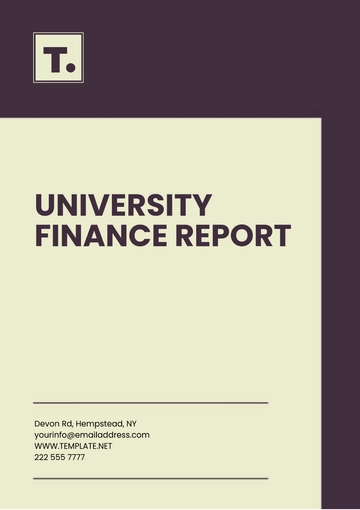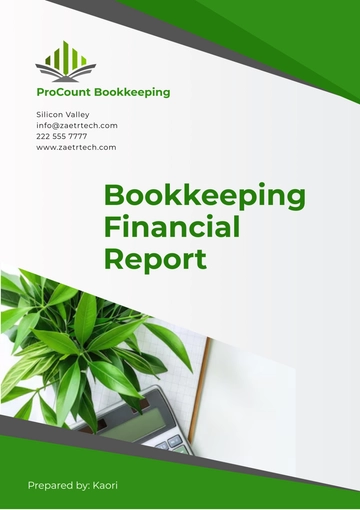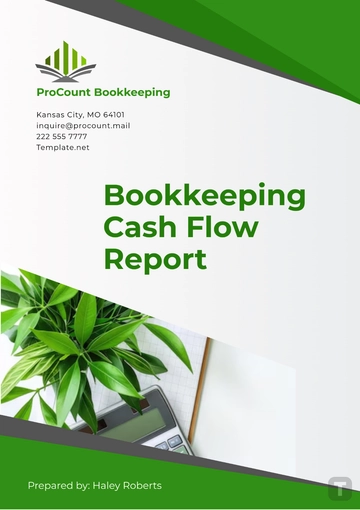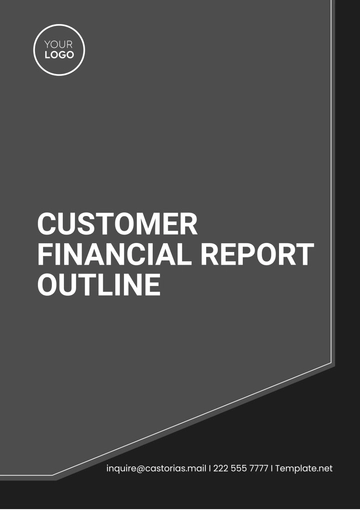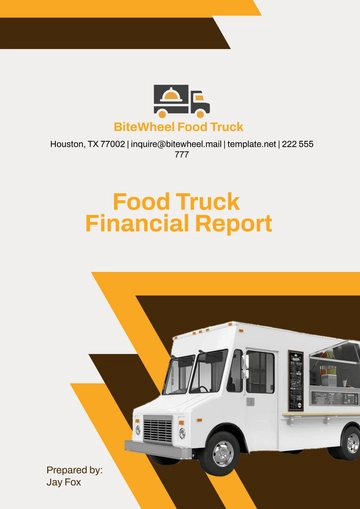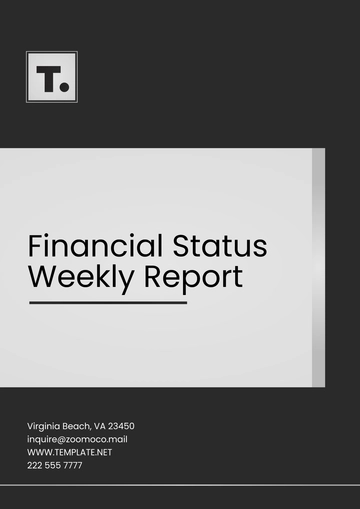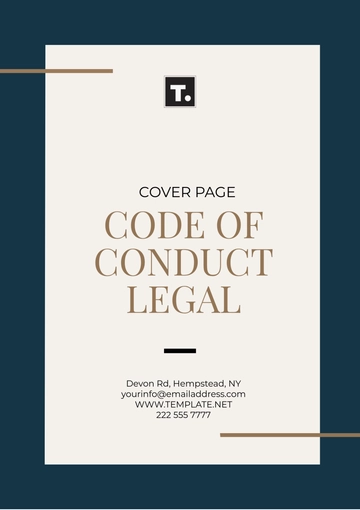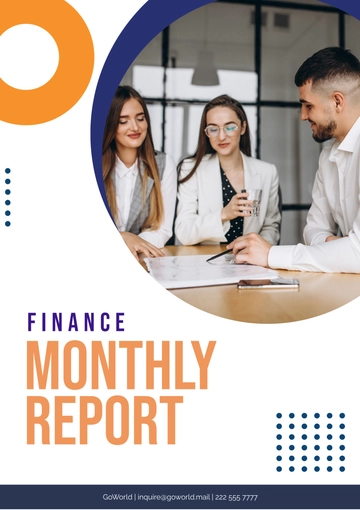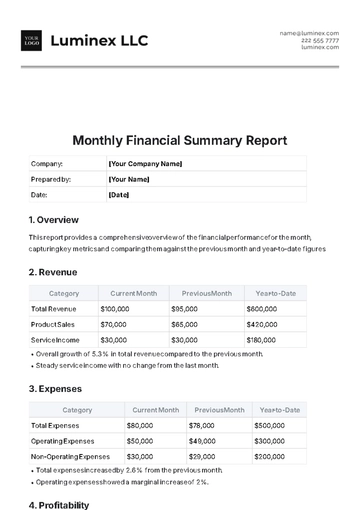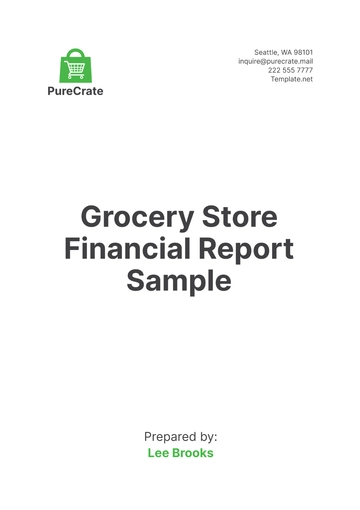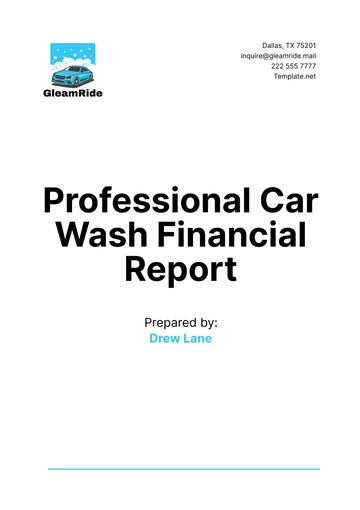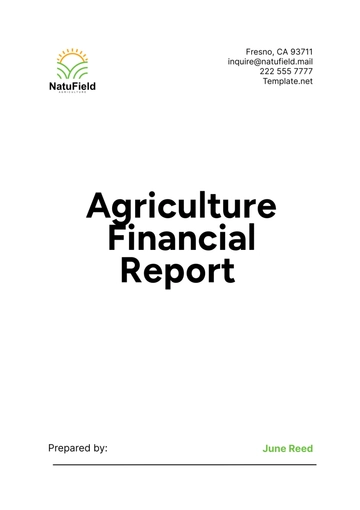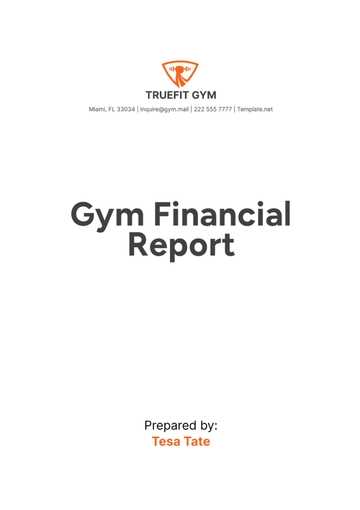Free Financial Risk Transparency Report

Executive Summary
A. Overview of Financial Risk Exposure
We have delved into the intricate details of [Your Company Name]'s financial risk exposure, providing a comprehensive understanding of the multifaceted challenges we navigate. Market risk is explored, considering factors such as volatility in commodity prices, exchange rates, and interest rates. Credit risk analysis encompasses evaluation of counterparties' creditworthiness, while operational risk assessment looks into potential disruptions in processes, technology, and human factors.
B. Key Findings
Our examination unearthed pivotal findings crucial for strategic decision-making. Noteworthy discoveries include specific trends in market dynamics affecting our industry, changes in credit ratings of major partners, and vulnerabilities in our operational processes. These findings serve as the foundation for the subsequent sections, guiding the formulation of targeted risk management strategies.
Market Dynamics Trends
Identification of specific trends in market dynamics impacting our industry.
Analysis of market shifts, consumer preferences, and emerging technologies influencing our business environment.
Changes in Credit Ratings:
Recognition of alterations in credit ratings of major partners.
Assessment of the potential impact on creditworthiness, financial stability, and collaborative ventures.
Operational Vulnerabilities:
Discovery of vulnerabilities in our operational processes.
Evaluation of potential weaknesses in technology infrastructure, supply chain, and workforce procedures.
D. Recommendations
To effectively navigate the identified risks, we propose tailored recommendations designed to enhance ABC Corporation's resilience and mitigate potential adverse impacts.
Mitigating Market Risks:
In light of the identified market risks, we recommend the implementation of the following strategies:
Diversification Strategies: Spread investments across diverse markets and industries to reduce exposure to specific economic conditions.
Hedging Mechanisms: Utilize financial instruments such as futures or options to hedge against adverse movements in currency exchange rates or commodity prices.
Adaptive Investment Approaches: Stay agile in investment strategies, adapting to changing market conditions and seizing opportunities as they arise.
Introduction
A. Purpose of the Report
This report serves as a transparent communication tool, fulfilling the vital role of illuminating [Your Company Name]'s financial risk landscape. The purpose is to equip stakeholders with insights that facilitate informed decision-making. Whether for investors assessing risk-adjusted returns or regulatory bodies ensuring compliance, this report aligns with our commitment to transparency and accountability.
B. Scope and Limitations
While our analysis strives for comprehensiveness, it is essential to acknowledge certain limitations. These may include constraints in data availability, external factors beyond our control, and uncertainties associated with predicting market movements. Understanding these limitations is critical for interpreting the findings and recognizing the dynamic nature of the financial landscape.
C. Methodology
The methodology employed in this report integrates both quantitative and qualitative approaches. Quantitative data, such as financial metrics and ratios, forms the backbone of our analysis. Meanwhile, qualitative insights, including detailed explanations of risk categories and their impact, provide the necessary context for a nuanced understanding of our financial risk profile. This combined methodology ensures a robust and holistic assessment, aligning with industry best practices.
Company Profile
A. [Your Company Name] Overview
[Your Company Name], a leading technology solutions provider, boasts a rich history of innovation and excellence spanning over two decades. Renowned for our cutting-edge products and exceptional customer service, we have solidified our position as a market leader in the tech industry. Our diverse portfolio includes software solutions, hardware devices, and consultancy services, catering to a global clientele.
B. Industry Presence
Within the technology sector, [Your Company Name] holds a significant market share of [25%]. Our strategic initiatives, including successful collaborations with industry giants and expansion into emerging markets, underscore our commitment to sustainable growth. As a key contributor to technological advancements, we actively shape the future landscape of the IT industry.
C. Regulatory Environment
In navigating the complex regulatory landscape, [Your Company Name] adheres to the highest standards of compliance. Our regulatory framework includes adherence to ISO 9001 and ISO 27001 standards, ensuring the quality of our products and the security of customer data. We maintain a proactive approach to anticipate and address regulatory changes, reflecting our dedication to transparency, accountability, and ethical business practices.
Risk Identification
A. Market Risk
Explanation of Market Risk and its impact
Market risk for [Your Company Name] emanates from fluctuations in currency exchange rates, interest rates, and commodity prices. These variables can impact our financial performance, affecting revenues, expenses, and overall profitability. Given the dynamic nature of global markets, [Your Company Name] adopts a proactive approach, employing hedging mechanisms and diversified investment strategies to mitigate adverse consequences.
B. Credit Risk
Explanation of Credit Risk and its impact
Credit risk arises from our interactions with various counterparties, including customers, suppliers, and financial institutions. Evaluating their creditworthiness is paramount, as default or delays in payments can adversely affect our cash flow and financial stability. [Your Company Name] employs rigorous credit risk management strategies, including thorough credit assessments and risk-sharing mechanisms, to safeguard against potential financial losses.
C. Operational Risk
Explanation of Operational Risk and its impact
Operational risk encompasses the potential disruptions to [Your Company Name]'s business operations, stemming from technological failures, human errors, and external events. These risks can lead to financial losses, reputational damage, and regulatory non-compliance. To ensure resilience and continuity in our operations, [Your Company Name] implements robust operational risk management practices, including comprehensive contingency planning, technology upgrades, and ongoing workforce training initiatives.
Risk Assessment
A. Quantitative Analysis
Market Risk Assessment
To quantitatively assess market risk, we analyze historical data and project potential future scenarios. Using financial models, we evaluate the impact of currency exchange rate fluctuations, interest rate changes, and commodity price variations on our financial metrics. The table below provides a snapshot of the quantitative analysis:
Time Period | Exchange Rate Impact | Interest Rate Impact | Commodity Price Impact |
|---|---|---|---|
Year 1 | [$100,000 impact] | [$50,000 impact] | [$75,000 impact] |
Similar quantitative assessments are conducted for credit risk and operational risk, providing a comprehensive view of the potential financial implications.
B. Qualitative Analysis
Narrative on Qualitative Aspects
In addition to quantitative metrics, understanding the qualitative aspects of risk is crucial. Factors such as industry trends, regulatory changes, and competitive dynamics contribute to the overall risk landscape. The qualitative analysis involves a narrative that provides insights into how these factors may influence the identified risks and the potential challenges and opportunities they present.
Mitigation Strategies
A. Mitigation for Market Risk
Given the quantitative and qualitative insights gained, [Your Company Name] implements the following strategies to mitigate market risk:
Diversification: Spreading investments across different markets and currencies.
Hedging: Employing financial instruments to hedge against adverse currency and interest rate movements.
Scenario Planning: Anticipating potential market scenarios and adjusting strategies accordingly.
B. Mitigation for Credit Risk
To address credit risk, [Your Company Name] adopts the following mitigation measures:
Thorough Due Diligence: Conducting comprehensive credit assessments before entering into significant transactions.
Risk-sharing Mechanisms: Establishing agreements with partners to share credit risks and responsibilities.
Credit Terms Optimization: Structuring payment terms to minimize the impact of delayed payments.
C. Mitigation for Operational Risk
In mitigating operational risk, [Your Company Name] focuses on:
Contingency Planning: Developing robust contingency plans to address potential operational disruptions.
Technology Upgrades: Investing in advanced technologies to enhance operational resilience.
Workforce Training: Providing continuous training to employees to minimize the likelihood of human errors.
Scenario Analysis
A. Worst-Case Scenario
In the worst-case scenario, we contemplate a series of adverse events that could significantly impact [Your Company Name]'s financial stability. This includes a combination of extreme market volatility, credit defaults, and operational disruptions. The financial impact in this scenario is estimated as follows:
Market Downturn: A potential loss of [$2 million] due to a severe downturn in the market.
Major Credit Defaults: An estimated loss of [$1.5 million] resulting from defaults by major credit counterparties.
Severe Operational Disruption: A projected loss of [$1 million] due to a significant disruption in operational processes.
B. Best-Case Scenario
Conversely, the best-case scenario envisions a set of favorable circumstances that could positively influence [Your Company Name]'s financial performance. This may include robust market conditions, timely payments from counterparties, and smooth operational processes. The financial impact in this scenario is outlined as follows:
Market Uptrend: Anticipated gain of [$1.5 million] due to a positive trend in the market.
Timely Payments: Estimated gain of [$1 million] resulting from timely payments by counterparties.
Operational Efficiency: Projected gain of [$500,000] due to enhanced operational efficiency.
Disclosure and Transparency Measures
A. Regulatory Compliance
[Your Company Name] maintains a strong commitment to regulatory compliance by adhering to industry standards and guidelines. Our compliance measures encompass specific regulations such as GDPR, SOX, etc., ensuring the protection of customer data and upholding ethical business practices. Regular audits and assessments are conducted to validate our compliance with these regulations.
B. Communication Strategy
In upholding transparency, [Your Company Name] employs a proactive communication strategy. In the event of significant risk events, timely and accurate communication is paramount. This involves utilizing [specific communication channels, engaging key stakeholders, and adhering to a predefined frequency of updates]. By keeping stakeholders well-informed, we aim to build trust and ensure a clear understanding of our risk management efforts.
Continuous Monitoring and Adaptation
A. Overview
Recognizing the dynamic nature of the financial landscape, ABC Corporation commits to a robust system of continuous monitoring and adaptation. This new section focuses on the strategies and mechanisms in place to monitor risks proactively, evaluate their evolution, and adapt risk management strategies accordingly.
B. Risk Monitoring Framework
Implementing an advanced risk monitoring framework is imperative for ABC Corporation. This involves:
Real-time Data Analytics: Utilizing cutting-edge analytics tools to monitor market trends, credit ratings, and operational metrics in real time.
Key Performance Indicators (KPIs): Establishing a set of KPIs tailored to each risk category for ongoing assessment and comparison against predefined thresholds.
C. Scenario Planning and Stress Testing
To enhance preparedness, ABC Corporation engages in scenario planning and stress testing, including:
Scenario Analysis: Regularly conducting scenario analysis to anticipate potential risk scenarios and their impact on financials.
Stress Testing: Simulating extreme conditions to evaluate the resilience of current risk management strategies.
D. Adaptive Strategies
In response to evolving risks, ABC Corporation adopts an adaptive approach by:
Regular Strategy Reviews: Conducting periodic reviews of risk mitigation strategies to align with changing market dynamics.
Flexibility in Operations: Maintaining operational flexibility to swiftly adapt to unforeseen challenges.
E. Communication and Transparency
Ensuring clear communication on continuous monitoring efforts and adaptation strategies is paramount:
Stakeholder Updates: Regularly communicating updates to stakeholders on risk monitoring outcomes and adaptive measures.
Transparency Initiatives: Implementing transparent communication channels to foster trust and provide stakeholders with a clear understanding of ongoing risk management efforts.
Conclusion
A. Summary of Key Points
In summary, this comprehensive financial risk transparency report highlights the intricacies of [Your Company Name]'s risk landscape. Key points include [a recapitulation of major risk factors, noteworthy findings from the risk assessment, and the potential impact outlined in scenario analyses]. Understanding these aspects is vital for stakeholders to make informed decisions and for [Your Company Name] to navigate the evolving financial environment effectively.
B. Future Considerations
Looking ahead, [Your Company Name] acknowledges the dynamic nature of the financial landscape. Future considerations involve highlighting areas of potential change, emerging risks, and strategies for continuous improvement. Proactive planning and adaptability will be paramount in ensuring sustained financial health. [Your Company Name] remains committed to monitoring, evaluating, and enhancing its risk management practices in response to evolving market dynamics.
- 100% Customizable, free editor
- Access 1 Million+ Templates, photo’s & graphics
- Download or share as a template
- Click and replace photos, graphics, text, backgrounds
- Resize, crop, AI write & more
- Access advanced editor
Enhance financial transparency with the Financial Risk Transparency Report Template on Template.net. This editable and customizable report simplifies transparency assessments. Tailor content effortlessly using our Ai Editor Tool, ensuring adaptability and precision. Elevate your risk management strategies with this user-friendly template, offering a comprehensive approach to crafting personalized transparency reports for informed decision-making and strategic financial planning.
You may also like
- Sales Report
- Daily Report
- Project Report
- Business Report
- Weekly Report
- Incident Report
- Annual Report
- Report Layout
- Report Design
- Progress Report
- Marketing Report
- Company Report
- Monthly Report
- Audit Report
- Status Report
- School Report
- Reports Hr
- Management Report
- Project Status Report
- Handover Report
- Health And Safety Report
- Restaurant Report
- Construction Report
- Research Report
- Evaluation Report
- Investigation Report
- Employee Report
- Advertising Report
- Weekly Status Report
- Project Management Report
- Finance Report
- Service Report
- Technical Report
- Meeting Report
- Quarterly Report
- Inspection Report
- Medical Report
- Test Report
- Summary Report
- Inventory Report
- Valuation Report
- Operations Report
- Payroll Report
- Training Report
- Job Report
- Case Report
- Performance Report
- Board Report
- Internal Audit Report
- Student Report
- Monthly Management Report
- Small Business Report
- Accident Report
- Call Center Report
- Activity Report
- IT and Software Report
- Internship Report
- Visit Report
- Product Report
- Book Report
- Property Report
- Recruitment Report
- University Report
- Event Report
- SEO Report
- Conference Report
- Narrative Report
- Nursing Home Report
- Preschool Report
- Call Report
- Customer Report
- Employee Incident Report
- Accomplishment Report
- Social Media Report
- Work From Home Report
- Security Report
- Damage Report
- Quality Report
- Internal Report
- Nurse Report
- Real Estate Report
- Hotel Report
- Equipment Report
- Credit Report
- Field Report
- Non Profit Report
- Maintenance Report
- News Report
- Survey Report
- Executive Report
- Law Firm Report
- Advertising Agency Report
- Interior Design Report
- Travel Agency Report
- Stock Report
- Salon Report
- Bug Report
- Workplace Report
- Action Report
- Investor Report
- Cleaning Services Report
- Consulting Report
- Freelancer Report
- Site Visit Report
- Trip Report
- Classroom Observation Report
- Vehicle Report
- Final Report
- Software Report
